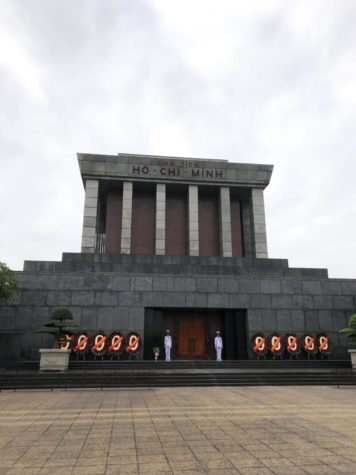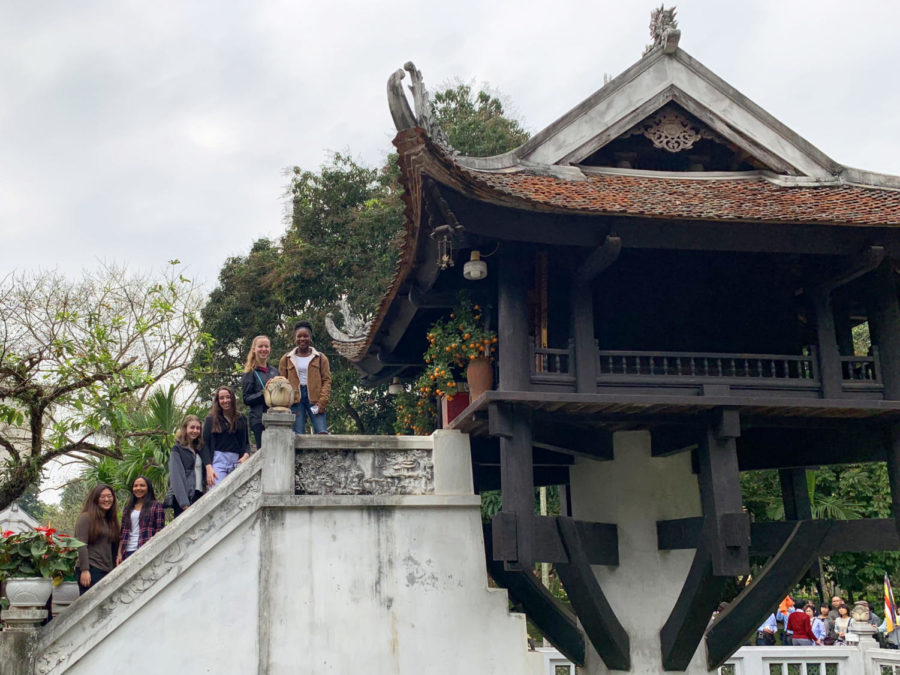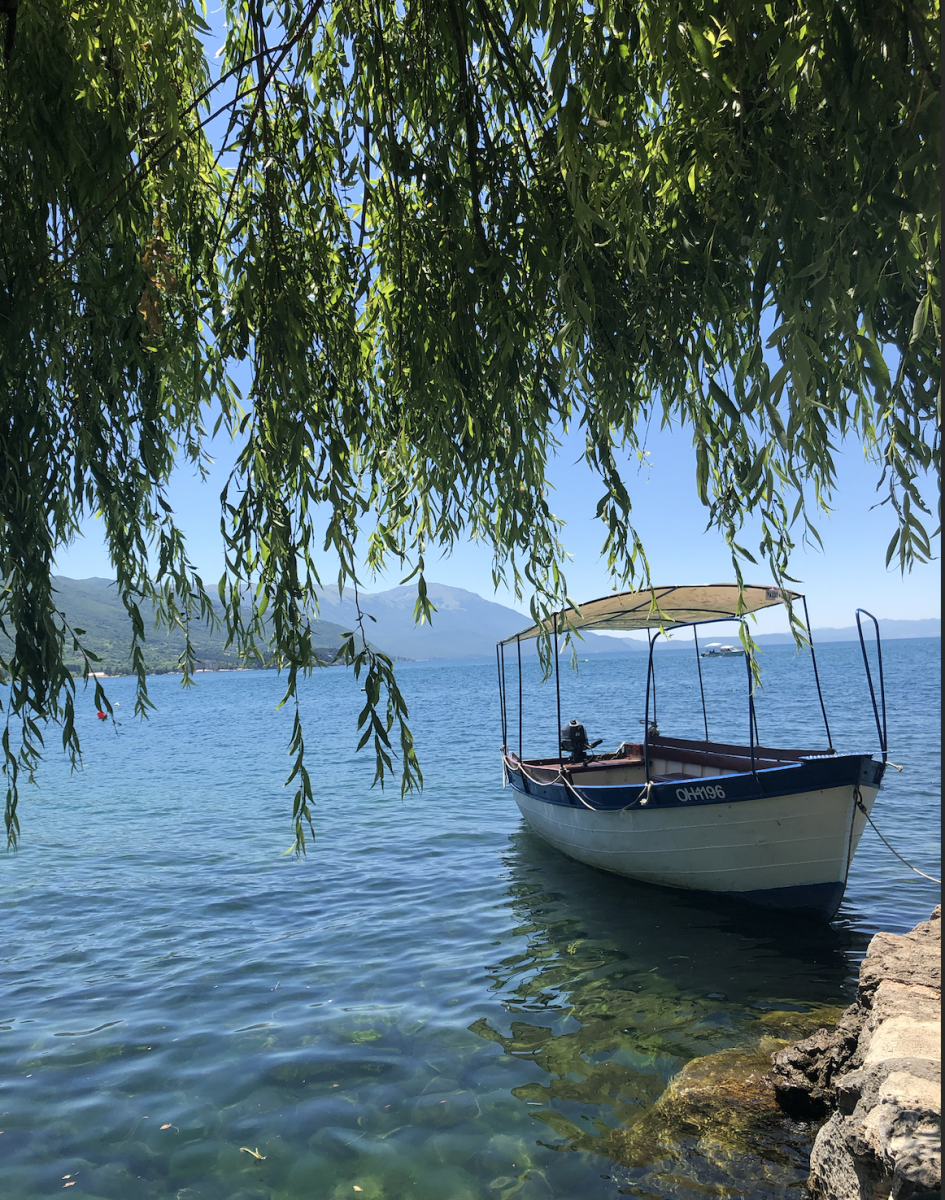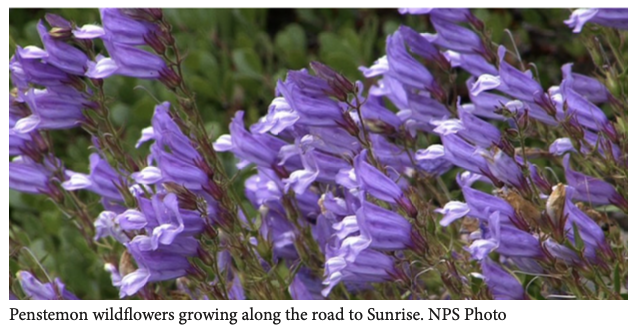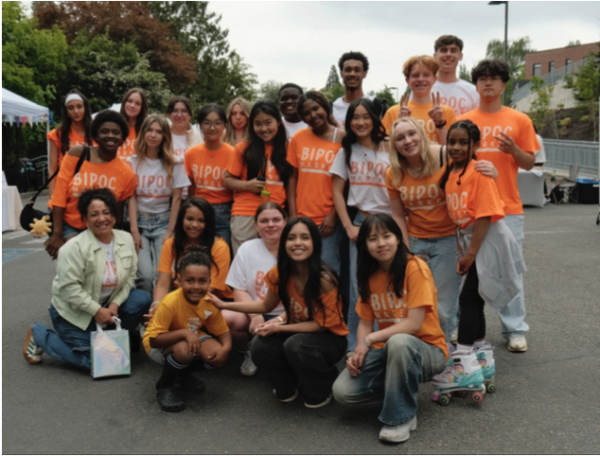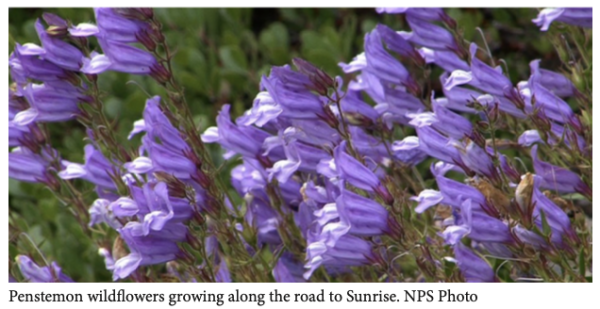Day 2: Hanoi
March 11, 2019
Long Bien bridge
by YoungSeo Jo
Hà Nội means inside river and is surrounded by the Red River and the Nhue River. The Long Bien Bridge is the oldest bridge that crosses the red river, connecting the Hoan Kiem district and the Long Bien District. The bridge was built between 1898 and 1902 when Vietnam was colonized by France. It was designed by the same man, Gustave Eiffel, that built the Eiffel Tower, something our guide, Cuong stressed proudly.
The bridge itself is very unique, the over century year old steel beams have a rustic red hue. We walked up a hill to the bridge in single file on a very narrow sidewalk to take in the view of the busy Hà Nội road. We attempted to take photos with motorcycles zipping past us which truly reminded us how bustling this city is.
Our group also got a rare glimpse of the train that heads to Sapa from Hà Nội. Cuong told us that this was only second time he has seen the train out of the hundreds of tours he has lead.
Below the bridge were venders with various baked goods, from delicious Vietnam baguettes to donuts that locals enjoy. A mosaic mural that passes underneath the Long Bien bridge has artistic renditions of the many different cultures in Vietnam. Cuong explained to us how the mural was started by one woman, who got the idea to make the mosaic when she accidentally broke a ceramic pot. With the help of many locals, the mural has grown to its current length of 2.5 miles, making it the world’s longest mosaic.
Tran Quoc Pagoda
by Allison Fitz
Our second stop Sunday morning was the oldest Buddhist temple in Hanoi, the Tran Quoc Pagoda. The complex sits on an island in West Lake, the largest lake in Hanoi, and was constructed over 1,450 years ago.
Red lanterns lined the path towards the gate into the temple, and two flags marked the entrance: the national flag of Vietnam, a bright red centered by a gold star, and a striped flag for the natural elements.
The architecture of each building reflects a strong Vietnamese nationalist sentiment. Within the tallest pagoda, which has eleven stories, sixty six buddhas faced six different directions for homeland protection.

Despite it being a tourist attraction, the temple remains a place of spirituality for the locals. As I entered the main temple (after taking off my shoes and covering my shoulders and knees out of respect), an older woman began chanting blessings in front of the altar as many of her group bowed to the ground.
Much of the Tran Quoc Pagoda challenged my assumptions about the concept of a temple: children ran around making noise, tourists snapped photos of the shrines, and locals left Kentucky Fried Chicken on the tables with the Buddhas. Nonetheless, the temple offered refuge, a small place for spirituality and quietness within a bustling city.
Museum of Ethnology
by Chanthen Hong
The Museum of Ethnology shares the history of the different ethnicities of the Vietnamese people. Each group has a unique way of living that depends on the region, climate, and resource availability. The majority of the population is Viet, with a minority population that consists of 54 different ethnic groups.
The ethnic Viets have a very particular way of life. For instance, in some regions, traditional houses are one floor and have three main components: the kitchen, the main room, and an independent house for guests. Interestingly, houses are built with a step at the main entrance so that when one enters the house, one pays respect to the ancestral altar. Other houses have two separate ladders for each sex, with windows that correspond to the number of daughters the family has.
Nowadays, Vietnamese houses are long and narrow as a result of taxes that are imposed on the width of the houses. The Viets live in houses with widths of 1-3 meters but lengths that can run up to 30 meters. In contrast to American individualism, Viet families continue to live in the same household throughout their lives.
Temple of Literature
by Samantha Salamone
When we first got to the Temple of Literature, we were surprised to turn and see a line of student graduates in graduation gowns (special áo dài) and hats. It turned out that they were headed to the Temple of Literature as well.
When we walked in, we saw this class of graduates taking class pictures and fun photos of each other, which I thought was really cool to see at the Temple of Literature, a place where many students go to pray for good grades in their classes and on exams.
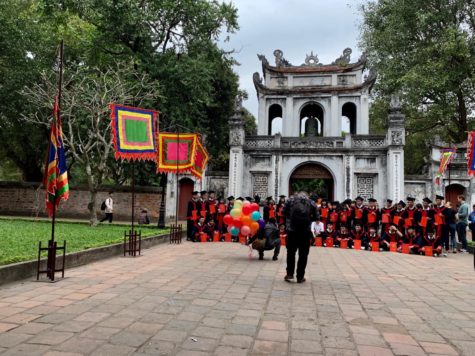
This temple was beautiful and scenic. There were many plants and trees, and a small pond in one area, and throughout the temple, there were many statues of two of Vietnam’s holy creatures: the tortoise and the phoenix. The tortoise represents strength and longevity, and the phoenix is simply good luck. We also dropped a few dollars into a large bowl that is said to give us good luck if we do so.
One Pillar Pagoda
by Julia Henning
The One Pillar Pagoda is located near the Ho Chi Minh complex. It sits above a pond with lily pads and lotus flowers. The bottom of the pillar is shaped like a lotus flower, because, as our tour guide Cuong explained, lotus flowers brought good luck to the creator in a dream. This specific pagoda is used to pray for a son, grandson, or great grandson. After seeing the buddha inside the pagoda, but without praying for a son ourselves, we circled the bodhi tree, which was gifted by the Indian president in 1958, three times for good luck.
Ho Chi Minh Complex
by Abby Givens and Nina Doody
A contrast to the bustling city of Hanoi, the Hồ Chí Minh complex is orderly and clean. The center of the complex is the mausoleum in which the legendary leader Hồ Chí Minh, who installed Vietnam’s communist regime and united the North and South, rests. Tourists stood in a line that wrapped around the complex to see his embalmed body. While Hanoi is the capital of Vietnam, the largest city in Vietnam, formerly Saigon, is named after him.
Beside Hồ Chí Minh’s mausoleum two large signs read, Nuoc cong hoa xa hoi chu nghia viet nam muon nam! Chu tich Ho Chi Minh vi dai song mai trong su nghiep cua chung ta!” which roughly translates to, “Long live the Socialist-Republic of Vietnam. The Great President Ho Chi Minh will live forever in our work.”
Perfectly manicured grounds are guarded by guards in crisp white uniforms. They stand still until an observer crosses the yellow line separating the wide pedestrian walkway and mausoleum to whom they will blow their whistles.
